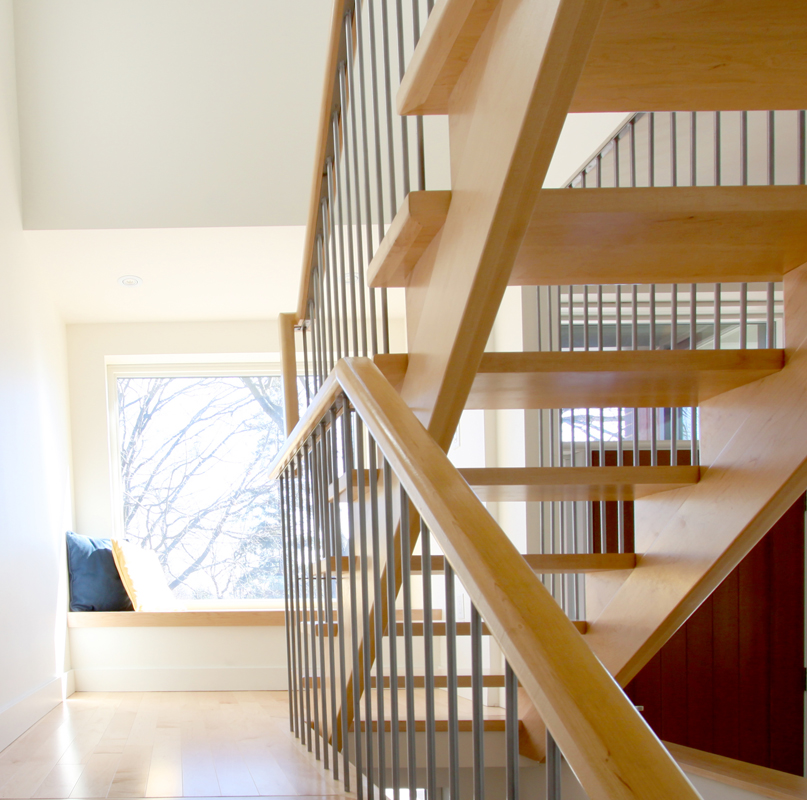Passive Solar Design in Ontario
Passive Solar Homes are gaining popularity once again, having first emerged into general public consciousness in the 1970’s. Defined succinctly by the US Department of Energy: passive solar design takes advantage of a building’s site, climate, and materials to minimize energy use.
In a “heating climate” like ours, where the major demand on the buildings is heating during the long cool winter months, a passive solar home requires careful design and planning. The challenge is how to retain the solar thermal heat over the evening and radiate it within the house and then how to gain the solar thermal heat during the day, without in both cases compromising the thermal envelope of the building. The overall strategies which need to be considered include orientation, thermal mass, windows, shading, distribution of heat, and insulation.
In our climate windows are the “weak” point in the wall in terms of insulation: even the best triple pane argon-filled windows will have an r-value that is only a fraction of the walls. Therefore considering curtains, or “thermal shutters” , which are like insulated folding walls instead of fabric curtains can help overcome some of the challenge of our heating-dominated climate when it comes to passive solar home design.
Here are a few simple questions to consider if you are planning a passive solar home.
- How is the overall home orientated?
- What features aid or detract from solar exposure – landscape, trees, vines?
- When and where do you want solar exposure?
- What window coatings should you use? Some window coatings will block heat transfer: so on windows that you want solar gain, do not use a low-e coating.
- What thermall mass will you use to store the heat and re-radiate it when needed?
- How will the heat/cold be distributed throughout the house? Are there keys area which need more heat then others? at different times?
When the design is balanced the simplicity of the passive solar approach far outweigh “active systems”. Active systems are often machines or gadgets such as shutters or evacuated tube solar collectors, passive systems are often elements like overhangs or thermal mass walls.

